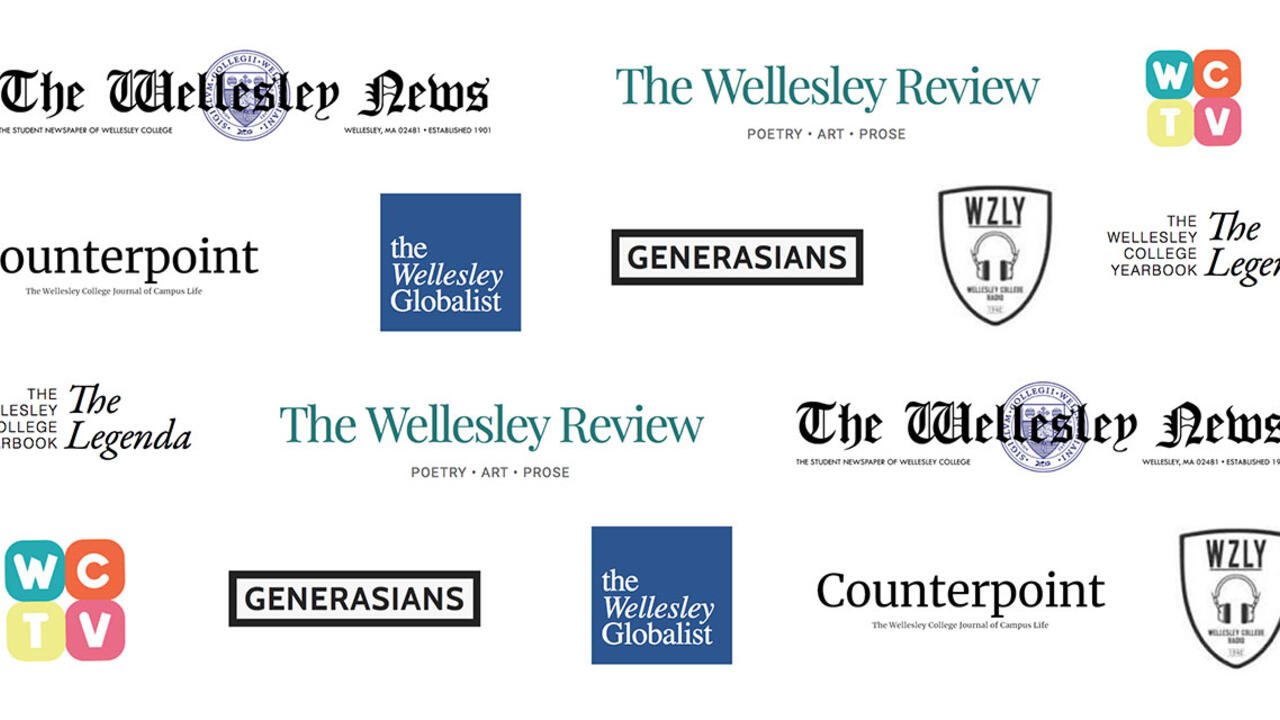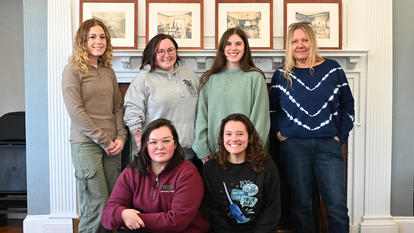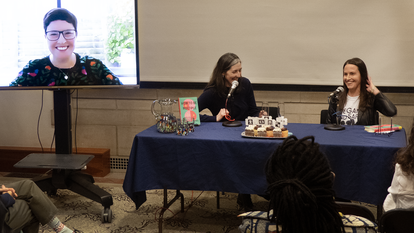Ahead of the 2019 Wilson Lecture, a Look at Student Journalism at Wellesley

Wellesley’s long history of student-run publications began in 1901 with the founding of the Wellesley News. Since then, Wellesley students have created magazines, journals, and other news and media outlets that highlight student life and important issues on campus.
As Wellesley prepares to welcome renowned journalist and New Yorker writer Jane Mayer, who will deliver the 2019 Wilson Lecture, students continue to be dedicated to the search for facts and truth. Each outlet has a unique focus—from creative expression, to current events on campus, to student experiences.
Sophie Hurwitz ’21 says her favorite part of working on the weekly Wellesley News is “hunting for interesting, little-known stories on campus, and being able to tell more people about the things that matter to the students here.” The Wellesley News serves as an informational source for the campus community, and it is kept in the Wellesley College Archives as an institutional record.
Sanjana Thakur ’20 joined the Wellesley Review, a semi-annual arts and literature publication founded in 2006, as a first-year after meeting the staff at the College’s annual Organization Fair. Thakur says she loves “the moment when the magazines we’d only ever seen as a PDF on a computer screen are delivered to campus and we get to see and touch [them] for the first time.”
For Samantha English ’19, her path to joining Counterpoint began in high school. The journal of campus life at Wellesley features perspectives outside the mainstream. “When I was a [prospective student], I met a senior at Spring Open Campus who was editor-in-chief of Counterpoint,” says English. “Her dedication to the student voice, along with her love for the magazine and its staff, dazzled me. I remember looking at her and thinking, ‘This is who I want to be in four years.’”
Other student outlets on campus include the Wellesley Globalist, a biannual international affairs magazine. Past issues have featured themes such as the interconnectedness between nations and cultures from as far back as the Middle Ages. “This theme symbolizes the commonalities between our wide array of article topics as well as bringing together communities, no matter how seemingly disparate, to begin mutually beneficial conversations,” wrote then-editors Zarina Patwa ’18 and Katherine Schauer ’18.
GenerAsians, published twice per year, is dedicated to raising campus awareness of issues affecting Asians and Asian Americans. Founded by Michelle Cheuk ’00 in 1997, it has focused on topics such as the denuclearization of North Korea, Asian American activism, Chinese street breakfasts, and subways in Beijing.
Legenda is the College’s yearbook. The theme this year is “Illumination,” which, the staff writes, showcases how “our individual lights were meant to add to the large image of Wellesley.”
Wellesley College Television is the home of WCTV News and Riot TV. WCTV News keeps students updated on current events and conducts interviews with faculty members, students, and members of the administration. Riot TV is a satire news show that provides “unfair and unbalanced commentary on the absurdity of the collective Wellesley experience,” according to their Facebook page.
WZLY, the College’s radio station, provides the student body with an eclectic mix of music and is currently broadcast exclusively on the internet. WZLY was founded in 1942, the first women’s college radio station in the United States, and launched with a rendition of “America the Beautiful,” written by Katharine Lee Bates, class of 1880.
All of these outlets provide opportunities for “students to share their opinions, thoughts, and emotions in a creative way,” says Cheryn Shin ’21 of the Wellesley Review. And all promote and amplify student voices.
“Student publications play a vital role in shaping on campus discourse, informing students about issues on and off campus, and promoting accountability of both student government and college administration,” said Diana Paulsen ‘21, executive producer of WCTV News. “Student journalism not only makes our community a better and more honest space but also prepares us to challenge injustice and bring light to truth in the world at large.”
Midori Yang ’19, of Counterpoint, says they “play an important role in solidifying the conversations and opinions that informally fill the campus” and spread them to a wider audience. Campus discussions can sometimes be limited to social media or conversations among friends; these outlets help organize and disseminate ideas and opinions, as well as offer new perspectives.
Wellesley’s tradition of journalism extends beyond the College’s gates, with many graduates purusing successful careers in media—among them Diane Sawyer ’67, Nora Ephron ’62, Michelle Caruso-Cabrera ’91, and Heather Long ’04.



